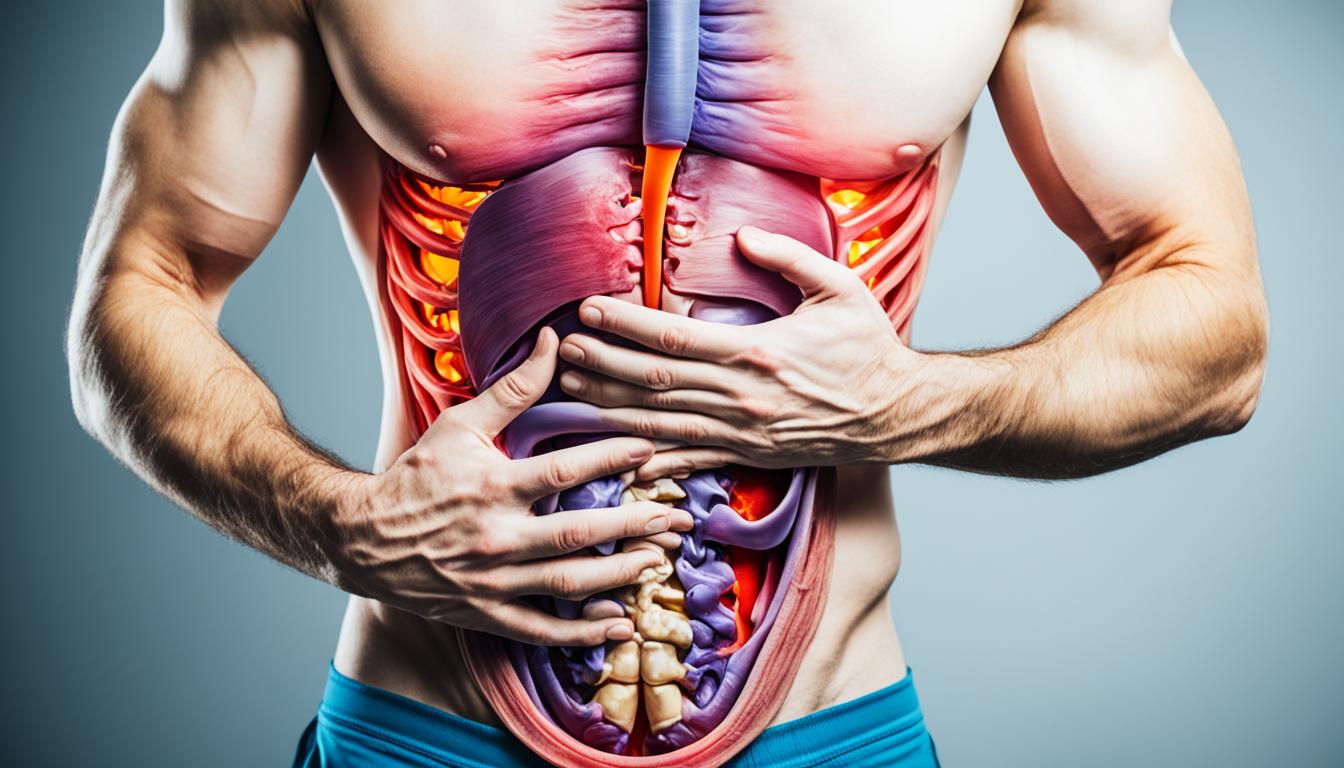Functional dyspepsia (FD) is a long-term problem with the stomach. Many people have it. This issue makes the upper stomach area feel bad. You may feel like you’re not digesting food well, feel pain, or bloated.
The causes of FD are still not clear. Yet, studies show a few things that might trigger it. These include issues with how your stomach works, being too sensitive inside, a specific infection called Helicobacter pylori (HP), and even mental stress. These factors can really lower your quality of life.
To help with FD, doctors use different kinds of drugs and may also suggest changes to your lifestyle. But sometimes, these treatments don’t work well. A new option that could help is stem cell therapy. This method uses the natural healing abilities of stem cells to heal your stomach and calm down the swelling.
Stem cell therapy works by sending stem cells to the damaged parts of your stomach. These stem cells can become many types of cells and help in fixing the stomach’s issues. This treatment aims to go straight to the root of FD and provide a fresh way to treat it.
Key Takeaways:
- Functional dyspepsia is a chronic functional gastrointestinal disorder characterized by upper abdominal symptoms.
- Abnormalities in gastrointestinal dynamics, visceral sensitivity, HP infection, intestinal flora disturbances, and psychological factors may contribute to the development of functional dyspepsia.
- Treatment options for functional dyspepsia include medication, lifestyle modifications, and the promising alternative therapy of stem cell therapy.
- Stem cell therapy utilizes the regenerative properties of stem cells to promote gastrointestinal healing and reduce inflammation.
- Further research is needed to explore the efficacy and safety of stem cell therapy in the management of functional dyspepsia.
Symptoms and Diagnosis of Functional Dyspepsia
Functional dyspepsia has varying symptoms from person to person. Postprandial distress syndrome and epigastric pain syndrome are the two main types.
Postprandial Distress Syndrome
This type leads to fullness, bloating, and early satisfaction after meals. It causes discomfort and less eating.
Epigastric Pain Syndrome
Epigastric pain syndrome causes pain in the upper belly. The pain can be constant or come and go. Eating certain foods or stress can make it worse.
The Rome IV criteria are used to diagnose this condition. These rules require symptoms for at least three months. Also, they need to rule out other diseases to make the right diagnosis.
Many people suffer from functional dyspepsia, about 10-15% of the world’s population. It affects the way people live and increases healthcare costs.
Studies show a link between functional dyspepsia and other stomach issues, as well as autoimmune problems. This shows the issue is complex and needs more research.
Let’s check a table showing how often functional dyspepsia happens and its effects:
| Prevalence | Socioeconomic Impact |
|---|---|
| Affects around 10-15% of the global population | Impaired quality of life |
| Increased healthcare costs |
This table explains the commonness of functional dyspepsia and its impact. It shows we need better ways to diagnose and treat it.
Treatment Options for Functional Dyspepsia
Functional dyspepsia is treated with a mix of lifestyle changes, drugs, and alternative methods. Traditional Chinese medicine (TCM) is one such alternative. TCM looks at the whole person to treat the root causes of functional dyspepsia.
TCM works on paths like the 5-HT one, affecting how our guts move and feel. It aims to fix these signals to make digestion work better and ease symptoms. It also looks at the AMPK path, key for energy use in cells. TCM tries to balance this system to help our guts work well.
Stem cell therapy is also promising for functional dyspepsia. Stem cells can become different cell types to help repair our bodies. In this case, they help heal the gut and lower inflammation, possibly easing symptoms for a long time.
This type of therapy uses a broad strategy to battle functional dyspepsia. It works on many levels, targeting the issues at their source. This new way of treating the problem might greatly help those who have functional dyspepsia.
But, we still need more study on these treatments. Learning more will show us how best to use these methods for functional dyspepsia. By improving and researching, we might find even better ways to help people with this stomach issue.
Conclusion
Functional dyspepsia is a well-known stomach issue that lasts a long time. It really affects people’s lives. Guess what? Its signs include feeling full, pain in the upper belly, and bloating.
Doctors are still figuring out what causes it. They think it may be due to not so normal stomach movement, high gut pain sensitivity, or even a germ called Helicobacter pylori. Changes in the balance of stomach germs and how you feel mentally could also be part of the story.
Now, how do they know if you have it? Doctors use rules called the Rome IV criteria. These rules say you must have symptoms for at least three months. Doctors will also check if there’s really nothing else causing your troubles.
Luckily, there are ways to help ease the symptoms. You can try changing your lifestyle, taking some medicines, or looking into things like traditional Chinese medicine. Stem cell therapy, for example, might help heal the stomach and lower swelling in people with this issue.
Looking at the big picture is key when it comes to dealing with functional dyspepsia. Doctors need to care for your whole self, not just your stomach. This means treating you in a way that fits your needs, mixing different types of treatments, and making lifestyle changes.
By working together, doctors and patients can greatly improve how people with this issue feel. This can lead to a much better life. It’s all about making sure everyone gets the care they really need.

